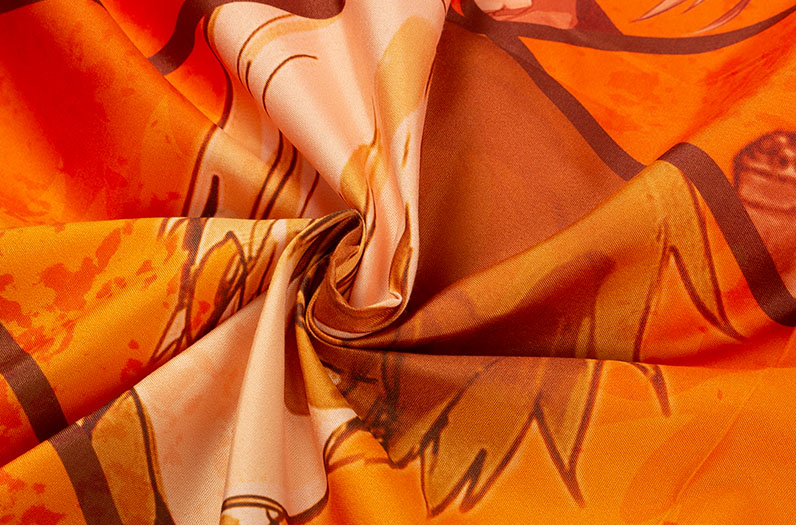After digital printing and heat fixation, the hand feel of polyester fabric can undergo subtle yet noticeable changes, which are largely influenced by the intricacies of the printing process and subsequent treatments. Polyester, known for its smooth and resilient qualities, serves as an excellent canvas for digital printing due to its ability to retain vivid colors and intricate designs. However, the process of applying ink and fixing it through heat can affect how the fabric feels when touched.
Digital printing involves the application of ink directly onto the fabric's surface using specialized printers. This method allows for precise control over color application, resulting in detailed and lifelike patterns. However, the introduction of ink to the fabric's surface can slightly alter its texture. In high-quality digital printing, the ink layer is kept very thin to minimize any disruption to the fabric's natural feel. Yet, depending on the amount and type of ink used, the fabric may initially feel slightly different, perhaps a bit stiffer or with a slight increase in texture on the printed areas. This change is usually minor and becomes less noticeable after the fabric is handled or washed.
The process of heat fixation, which follows printing, plays a crucial role in determining the final hand feel of the polyester fabric. Heat fixation involves exposing the printed fabric to high temperatures to set the ink, ensuring that the colors are vibrant, durable, and resistant to washing. This process can influence the fabric's feel in a few ways. The heat causes the polyester fibers to relax and settle, often leading to a smoother and softer texture. Additionally, the heat may slightly modify the surface of the fabric, making it feel more supple and less rigid. The end result is often a fabric that not only retains the clarity and vibrancy of the printed design but also has an enhanced, more comfortable hand feel.

Another factor that affects the hand feel is the pre-treatment of the fabric, which is often necessary to prepare polyester for optimal ink absorption. Pre-treatments might include the application of chemical agents designed to enhance color adhesion and vibrancy. While these treatments are crucial for achieving high-quality prints, they can sometimes impart a temporary crispness or stiffness to the fabric. However, this effect usually diminishes after the fabric undergoes heat fixation and subsequent washing, leading to a more natural and pleasant texture.
In the long term, the hand feel of digitally printed polyester fabric remains relatively stable, especially when proper care instructions are followed. The fabric's durability ensures that it withstands regular use and washing without significant degradation in softness or smoothness. Additionally, because polyester is inherently resistant to shrinking, stretching, and wrinkling, the fabric maintains its structural integrity and tactile qualities over time. The combination of vibrant, long-lasting prints and a smooth, soft feel makes digitally printed polyester fabric a popular choice for various applications, ranging from fashion to home décor.
Overall, while digital printing and heat fixation can introduce slight changes to the hand feel of polyester fabric, these changes are generally positive, enhancing the fabric's tactile qualities while preserving its visual appeal. The resulting fabric typically feels smooth, soft, and luxurious, making it well-suited for high-end products where both aesthetics and comfort are important.

 English
English Español
Español























.jpg?imageView2/2/format/jp2)





























